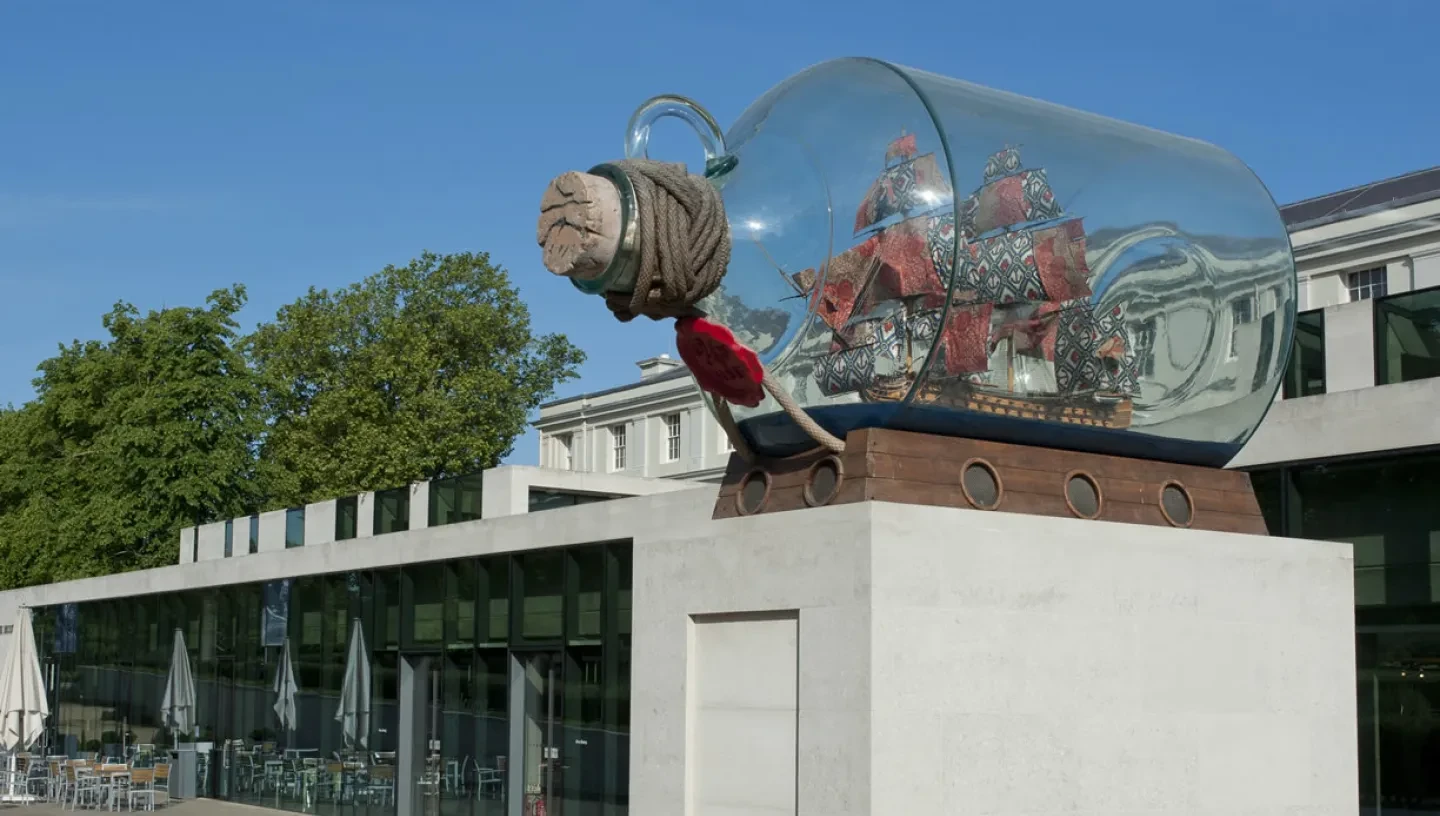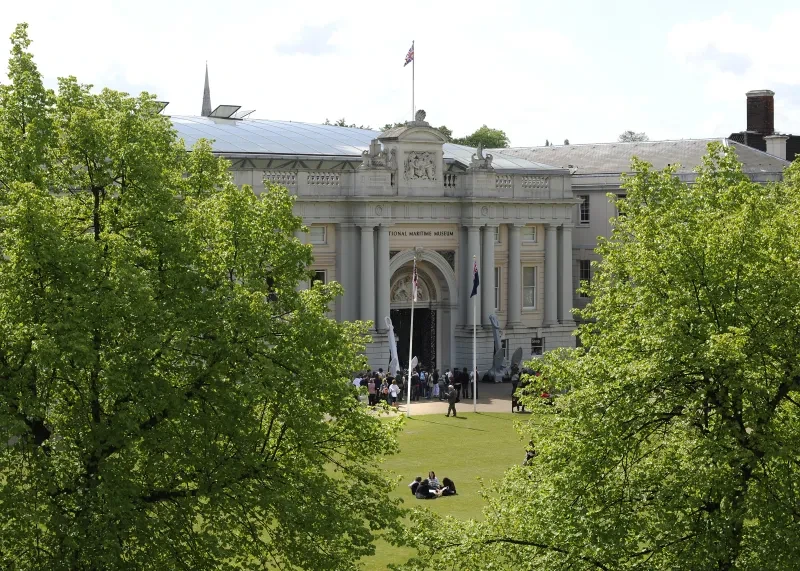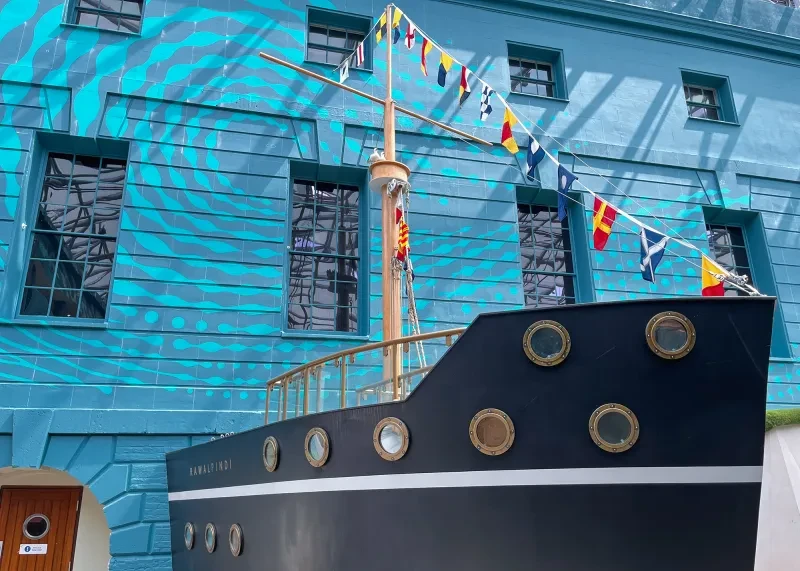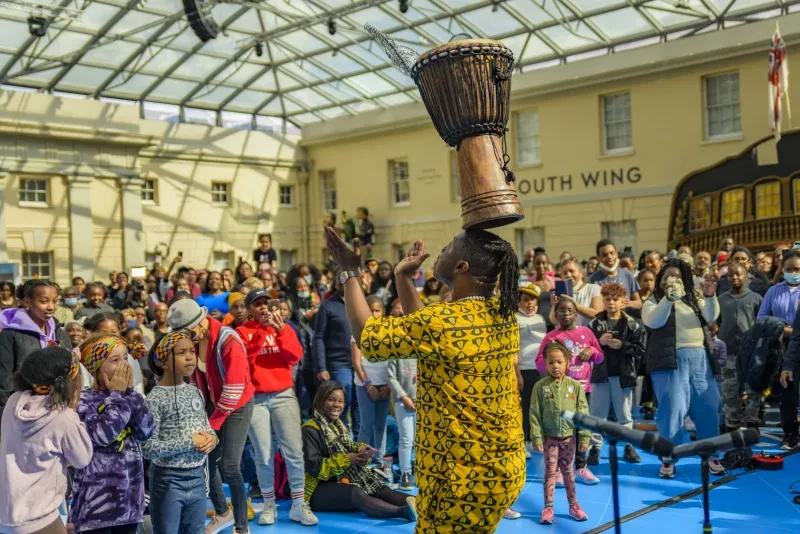
Essential information
| Location | |
|---|---|
| Price | Free |
A trip to the National Maritime Museum isn’t complete without taking a picture of Nelson’s Ship in a Bottle.
The artwork is a scaled-down replica of HMS Victory, Vice-Admiral Horatio Nelson’s flagship at the Battle of Trafalgar in 1805. It was made by Yinka Shonibare CBE, a multidisciplinary artist whose work explores issues including race, colonialism and class.
This monumental piece was created for Trafalgar Square’s Fourth Plinth project. It was unveiled in the Square in 2010, standing in dialogue with Nelson’s Column.
Since 2012, Nelson’s Ship in a Bottle has stood outside the National Maritime Museum’s Sammy Ofer Wing, following a fundraising campaign with the Art Fund.
See it for free during your visit to the National Maritime Museum.
Take a closer look
Nelson’s Ship in a Bottle tackles complex themes in fresh and powerful ways.
The ship’s 37 patterned sails reference Indonesian batik designs (the art of decorating cloth using wax and dye), which were mass-produced by Dutch traders and sold in West Africa. Despite their complex history, linked to emigration, industrialisation and cultural appropriation, these textiles are now associated with African dress and identity.
Nelson’s Ship in a Bottle also draws inspiration from the craft of putting ship models inside glass bottles, which grew in popularity during the 19th century. While Shonibare’s method is shrouded in secrecy, the technique typically involves tying cotton threads to the masts of a ‘flat-packed’ ship. Once the ship is laid inside the bottle, the strings are pulled to raise the masts.
For Shonibare, Nelson’s Ship in a Bottle is a celebration of multiculturalism. The 823 men on board the Victory at the Battle of Trafalgar came from a range of nations and regions including Brazil, India, Africa and the Caribbean:
“It’s a celebration of London’s immense ethnic wealth, giving expression to and honouring the many cultures and ethnicities that are still breathing precious wind into the sails of the United Kingdom,” Shonibare says.
After taking in Nelson’s Ship in a Bottle, head inside the National Maritime Museum to discover more stories of global encounters, cultural exchange and human endurance.





